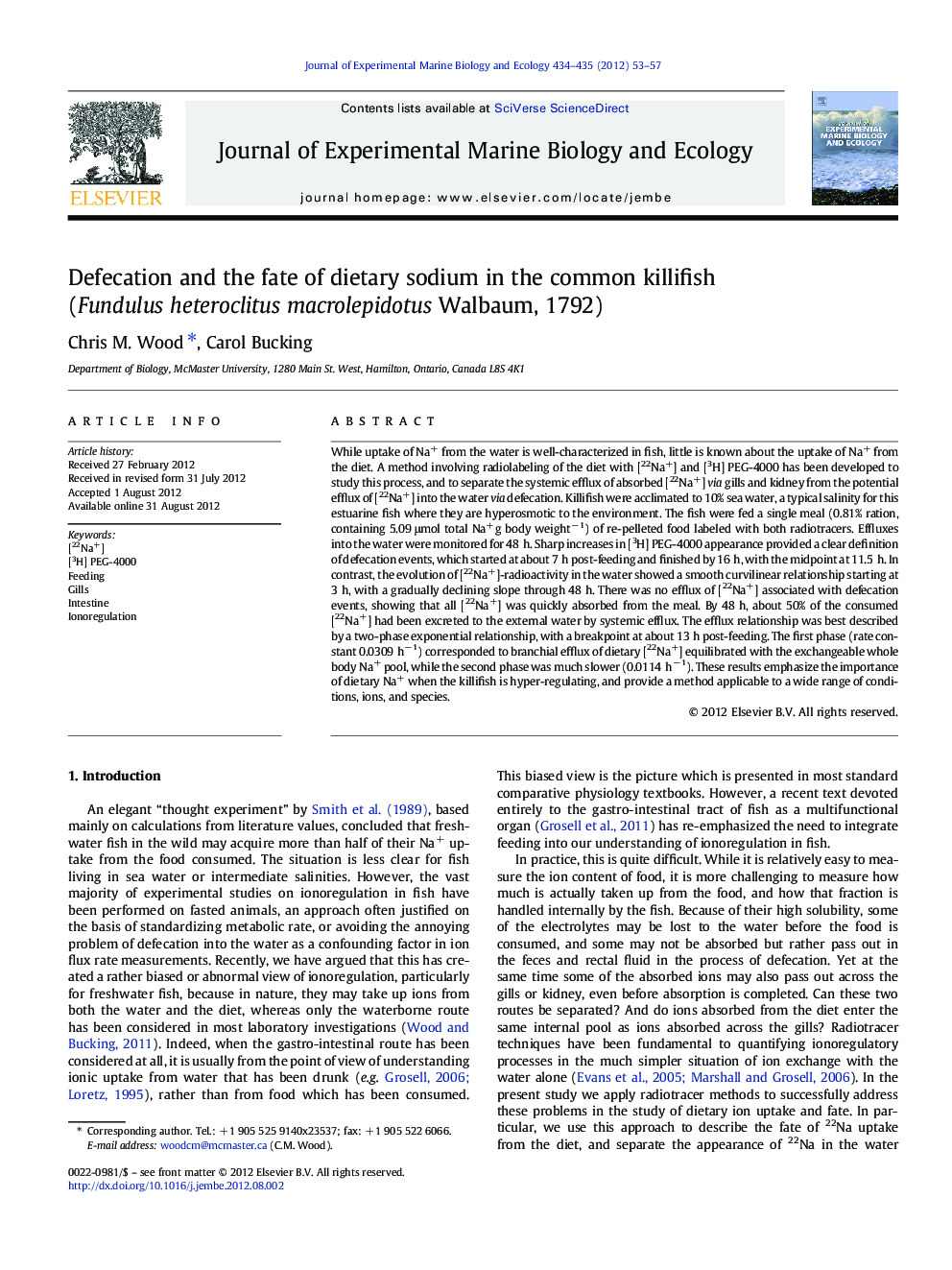| کد مقاله | کد نشریه | سال انتشار | مقاله انگلیسی | نسخه تمام متن |
|---|---|---|---|---|
| 4395929 | 1618439 | 2012 | 5 صفحه PDF | دانلود رایگان |

While uptake of Na+ from the water is well-characterized in fish, little is known about the uptake of Na+ from the diet. A method involving radiolabeling of the diet with [22Na+] and [3H] PEG-4000 has been developed to study this process, and to separate the systemic efflux of absorbed [22Na+] via gills and kidney from the potential efflux of [22Na+] into the water via defecation. Killifish were acclimated to 10% sea water, a typical salinity for this estuarine fish where they are hyperosmotic to the environment. The fish were fed a single meal (0.81% ration, containing 5.09 μmol total Na+ g body weight− 1) of re-pelleted food labeled with both radiotracers. Effluxes into the water were monitored for 48 h. Sharp increases in [3H] PEG-4000 appearance provided a clear definition of defecation events, which started at about 7 h post-feeding and finished by 16 h, with the midpoint at 11.5 h. In contrast, the evolution of [22Na+]-radioactivity in the water showed a smooth curvilinear relationship starting at 3 h, with a gradually declining slope through 48 h. There was no efflux of [22Na+] associated with defecation events, showing that all [22Na+] was quickly absorbed from the meal. By 48 h, about 50% of the consumed [22Na+] had been excreted to the external water by systemic efflux. The efflux relationship was best described by a two-phase exponential relationship, with a breakpoint at about 13 h post-feeding. The first phase (rate constant 0.0309 h− 1) corresponded to branchial efflux of dietary [22Na+] equilibrated with the exchangeable whole body Na+ pool, while the second phase was much slower (0.0114 h− 1). These results emphasize the importance of dietary Na+ when the killifish is hyper-regulating, and provide a method applicable to a wide range of conditions, ions, and species.
► A radiotracer method has been developed for studying dietary Na+ uptake in fish.
► [3H] PEG-4000 efflux provides a clear signal of defecation events.
► 22Na+ was rapidly absorbed from the intestine in killifish.
► 50% of absorbed 22Na+ was excreted by systemic efflux by 48 h.
► 22Na+ was not effluxed in defecation.
Journal: Journal of Experimental Marine Biology and Ecology - Volumes 434–435, 1 December 2012, Pages 53–57